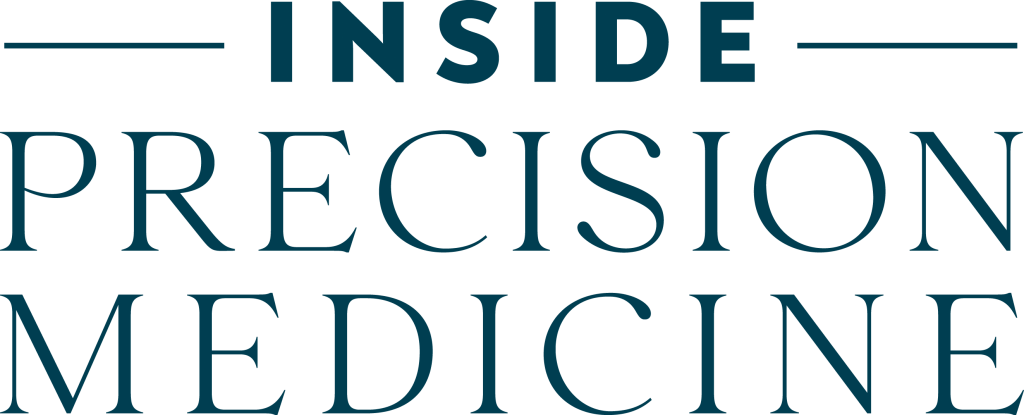
In New Brunswick, New Jersey, there is a lab where a robot performs microscopic operations on individual strands of hair of all types—curly, kinked, and straight—delicately splitting them open. Inside these thin, threadlike outgrowths, typically no thicker than 100 microns, lies a core containing a trove of biological information. According to Manish Arora, PhD, professor and vice chairman of environmental medicine and public health at the Icahn School of Medicine at Mount Sinai, a single strand of hair can provide the same kind of information as the core of a tree. Just as arboreal rings can tell you the tree’s age and about environmental conditions and stressors by year, a hair can provide insight that rivals, if not exceeds, a series of blood tests conducted over thousands of time points. In 2020, Arora founded LinusBio to develop a platform capable of translating the biochemical patterns in an individual’s hair, including the robotic follicular surgeon and corresponding computational pipeline for analyzing the massive amounts of data that would be collected.

Five years and countless hairs later, LinusBio presented the latest results from a multi-center, international study, demonstrating that the platform can discern whether a child does not have autism spectrum disorder (ASD)—a condition that has made little diagnostic progress beyond a clinician’s behavioral analysis and on average occurs four years into an individual’s life. The findings, presented at the Metabolomics and Human Health Conference, a Gordon Research Conference, indicate that a metabolite-based test on individual hair strands developed by LinusBio called ClearStrand-ASD can rule out autism in children aged one to 36 months. “My vision, as a parent and a scientist, is that we have the same success even if we can’t find it in ASD as we’ve had in most cases of type 2 diabetes, where you have a quality of life that is very similar to someone without that diagnosis,” Aurora told Inside Precision Medicine. “We’re trying to help families get therapy at the right time and quickly to maximize its impact.”
In addition, LinusBio today announced the commercial launch of ClearStrand-ASD, which can now be ordered by a licensed healthcare provider in 44 states (it currently excludes California, Hawaii, Maryland, New York, Pennsylvania, and Washington, DC). To use ClearStrand-ASD to treat patients, a clinician can contact LinusBio to enroll an individual, who receives a kit to collect the hair (which can be done at home), and then send it back via a provided envelope already with the necessary postage. The process eliminates the need for freezing procedures or tests that digest cells to release DNA into a buffer. The whole sample stays intact and isn’t at risk of degradation. In under a month, the clinicians will get the results back. “We can give you a precise answer very quickly,” said Arora. “There’s no need to wait a year or two years or any duration of time. You get the full answer within about three to four weeks, and it can bring you to begin your journey of healing because once you get that diagnosis, it opens up room for therapy. Every state in the U.S. mandates ASD therapy, so once you receive a diagnosis, you are eligible for it, and your child can begin to improve.”
A parent’s love and passing the eye test
Thomas Frazier, PhD, is a clinical psychologist, professor of psychology at John Carroll University, prominent autism clinical researcher, and the parent of a 21-year-old son with profound autism and intellectual disability. When approached by Arora, Frazier initially didn’t buy into the idea of how molecules in a single hair can inform the probability of diagnosing an individual with ASD. “I’ve been in this field long enough that I worked with companies that were interested in genetic approaches to diagnosis, and then I worked with companies that were interested in metabolomics and different immune-related molecule approaches,” Frazier told Inside Precision Medicine. “To date, none of that has really come to market. I’m also a behavioral psychologist—behavior is how we diagnose autism.”

Given Arora’s reputation as a meticulous scientist, Frazier hesitated to dismiss the idea. As he listened more, the neurobehavioral expert became increasingly convinced of the methodology and replicability of the platform developed by LinusBio, which uses laser ablation-inductively coupled plasma-mass spectrometry (LA-ICP-MS). Frazier eventually decided that he wanted to join but would only do so on one condition: that ClearStrand-ASD would not be marketed as an absolute binary decision-making tool—in other words, whether a patient does or does not have autism. “Nothing is ever a yes-no,” said Frazier. “It’s much more about, ‘How do we change the probability of diagnosis, and is there enough value there actually to make a difference?’”
Indeed, ClearStrand-ASD is a rule-out test: a negative result decreases the probability of ASD. The test can only indicate whether an individual is negative or non-negative; there is no positive result because the results do not imply an increase in probability. For example, Frazier explained that for people with a high risk for ASD—those who screen positive or have a positive family history—the likelihood of having ASD increases from the baseline population level of 1–3% to around 15%. If the ClearStrand-ASD results for a high-risk individual, that person’s risk of ASD drops down to 7–8%. It may not sound like much, but speaking as a parent of an individual with ASD, Frazier says it can make a world of difference.
Time is of the essence
The rule-out test can have a significant impact because, in recent years, the wait time to see a specialist can be over a year, which Frazier believes is due to the loose use of the words “autist,” “autism,” and “autistic.” Frazier hopes that ClearStrand-ASD can help deprioritize kids without a high probability of having autism. So, this biochemically informed triaging has a lot of utility for relieving the diagnostic burden on clinics and decreasing the wait times and stress for families. “That information helps parents feel more comfortable, knowing they don’t have to rush to get an evaluation done as soon as possible,” said Frazier. “I don’t have to panic if it’s a bit longer wait for an evaluation. I can instead do other things, like developmental treatment, in the meantime. Allowing people to access evaluation services in either scenario still… Even though your child has a lower risk of autism, you may still be concerned and want more information.”
One thing that is well-established and accepted in the ASD community is that early detection enables early intervention, leading to far better treatment results. “Our brain is gathering all this information and can learn so well in the first one to one and a half years of life,” said Arora. “Repeated studies have shown that early intervention works. We want to bring that first diagnosis and therapy age to a much younger age so children can do better.”
Yet the median age of diagnosis of autism in the U.S. has been stuck at four years or older in part because people often associate autism with the onset of symptoms. If a patient does have a heritable component of autism, ClearStrand-ASD should, theoretically, work at conception. “The biological signatures are there from the early stage of development,” said Arora. “The clinical symptoms, the observable symptoms, appear later, but just relying on them is part of the problem. That’s why we diagnose things too late. We never had a true test like we do now. We can detect the condition earlier. The idea is to deliver enough therapy and the right kind of therapy, and then the severity becomes much lower.
Exposing the exposome
The prevalence of autism is increasing at a rate that cannot be fully explained by Mendelian inheritance patterns, suggesting that the complex neurodevelopmental disorder is not purely genetic. That autism often has a non-genetic component, now frequently referred to as exposome, is part of what drove Arora to hair analysis, which has been used in forensic and environmental toxicology as well as drug testing for some time. However, Arora, his team, and LinusBio quickly discovered that deciphering the “tree rings” in an individual’s hair wasn’t as straightforward as simply identifying a specific feature; instead, gleaning diagnostic information from metabolite profiles in hair is a huge data problem requiring AI-based analysis to sort out the proverbial needles in the haystack.
“We have 150 million biochemical signatures per person from a single one-centimeter strand of hair—that’s a huge volume of data,” said Arora. “We discovered that the signal concealed itself within the temporal dimension. That’s where our platform, which has a thousand time-points per person, can uncover these patterns over time. This represents a significant step in transitioning from genomics to temporal exposure.”
Consistent across cultures
Since current autism diagnosis leans heavily on qualitative behavioral analysis, it may not be a reach to say that autism is diagnosed differently all over the world due to the culture and customs of each country. For example, if you had doctors from the US and Japan diagnose patients from their respective resident countries and then swap the doctors, there is a pretty good chance that those diagnoses will not line up.
The data presented by LinusBio this week was a multi-center, international study that included newborns and young children in the U.S., U.K., Sweden, and Japan. Based on a high prevalence of 14% (19.8% in the U.S. as a whole), the test had an NPV of 92.46% (95% WSI 83.7% to 96.71%) and a sensitivity of 81.36% (95% WSI 69.62% to 89.26%). In this way, ClearStrand-ASD seems to offer a reliable biochemical test that can help doctors quickly rule out ASD. The test may help reduce the time to confirm ASD diagnosis and initiation of early.
LinusBio showed that ClearStrand-ASD can provide an objective diagnosis that cuts across cultures and can be applied across borders and in a wide range of communities in the United States, demonstrated by a recent statewide study conducted in partnership with the University of California Davis. Frazier said, “One of the reasons we went there is because it’s such a large and diverse state, so we have multiple different ethnicities and people with different diets and cultural histories living all there, and we wanted to see if our biomarker has consistency. That’s what it shows—[ClearStrand-ASD] will deliver the same accuracy of results in people of different backgrounds.”
That being said, Frazier thinks that the future of autism diagnosis shouldn’t shun the behavioral component because, while there’s variation, there are some pretty well-established measures of behavior that define the disorder. “There’s variation, but there’s also what I would call a diagnostic handle—there’s a core aspect to autism,” said Frazier. “Many people cross-culturally latch on to the qualitative impairment and social behavior along with the repetitive, perseverative, or inflexible behavior. When you have two handles like that together, I think it minimizes the chances of misdiagnosis.”
A human in a hair
One of LinusBio’s next steps is to dig deeper into understanding the subtypes identified with ClearStrand-ASD and then partner with drug developers to come up with precision therapies for different subtypes of autism as well as diseases and disorders beyond ASD. Arora said LinusBio chose to work on ASD because of the dearth of biomarkers and that their platform can be used for any disorder or disease, regardless of the tissue. LinusBio is also working on ADHD and ALS, and Arora said their platform will address more and more indications through partnerships. Arora said, “We are finding that our platform can be widely applied, both to detecting and characterizing the molecular composition of diseases and to developing new treatments and drugs.”
Perhaps Arora and LinusBio can push their platform to get reads for hundreds of medical indications. If they don’t, they still have achieved a remarkable feat that can improve the lives of countless people with a single strand of hair.














